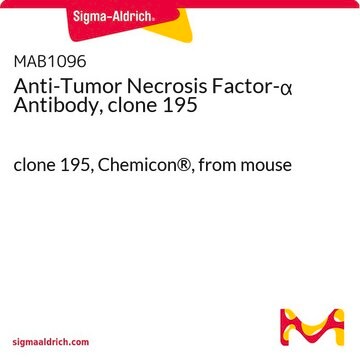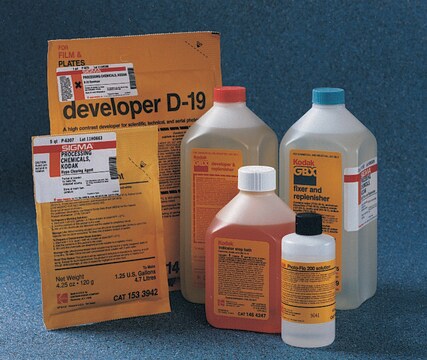MAB3061
Anti-Fas Antibody, clone SM1/1
clone SM1/1, Chemicon®, from mouse
Synonim(y):
CD95, Apo-1
About This Item
Polecane produkty
pochodzenie biologiczne
mouse
Poziom jakości
forma przeciwciała
purified immunoglobulin
rodzaj przeciwciała
primary antibodies
klon
SM1/1, monoclonal
reaktywność gatunkowa
human
producent / nazwa handlowa
Chemicon®
metody
flow cytometry: suitable
izotyp
IgG2a
numer dostępu NCBI
numer dostępu UniProt
Warunki transportu
wet ice
docelowa modyfikacja potranslacyjna
unmodified
informacje o genach
human ... FAS(355)
Powiązane kategorie
Specyficzność
Zastosowanie
Induction of apoptosis with SM1/1:
SM1/1 induces apoptosis best when used together with a 10 molar excess of crosslinking anti-mouse IgG. The amount of antibody needed will vary depending upon the cell line used and the age of the cell and their growing conditions; best results are achieved when cells are less than 70% confluent and relatively young passage numbers, and note not all cells what express CD95 can be induced with SM1/1, the reasons why are unclear.
On Jurkat cells 100-500ng/mL of SM1/1 in the presence of 10X excess of goat anti-mouse IgG will produce ~50% kill as measured by MTT assay; without crosslinking, little or no killing will be observed.
On SKw6.4 cells 100-500ng/mL of SM1/1 in the presence of 10X excess goat anti-mouse IgG will produce ~50% kill as measured by MTT; without crosslinking ~20% or less of the cells will be induced.
On L/F15 cells 100-500ng/mL of SM1/1 with or without crosslinking IgG ~ 50% of the cells will be induced to undergo apoptosis as measured by MTT assay.
In all cases it is important to remove excess SM1/1 before adding the secondary crosslinking antibody;
Antibody additions can be either at 4C, or 37C; at 37C primary antibody should be incubated no longer than two hours prior to secondary crosslinker addition. Crosslinking antibody is typically incubated overnight, although shorter times may yield acceptable results.
As controls, cells should be incubated with an unrelated irrelevant isotype matched IgG2a antibody or with the crosslinking antibody alone.
SM1/1 monoclonal characterization is first reported in Trauth, BC et al Science 1989 245:301-5.
Optimal working dilutions must be determined by end user.
Apoptosis & Cancer
Apoptosis - Additional
Powiązanie
Postać fizyczna
Przechowywanie i stabilność
Inne uwagi
Informacje prawne
Oświadczenie o zrzeczeniu się odpowiedzialności
Not finding the right product?
Try our Narzędzie selektora produktów.
Kod klasy składowania
12 - Non Combustible Liquids
Klasa zagrożenia wodnego (WGK)
WGK 2
Temperatura zapłonu (°F)
Not applicable
Temperatura zapłonu (°C)
Not applicable
Certyfikaty analizy (CoA)
Poszukaj Certyfikaty analizy (CoA), wpisując numer partii/serii produktów. Numery serii i partii można znaleźć na etykiecie produktu po słowach „seria” lub „partia”.
Masz już ten produkt?
Dokumenty związane z niedawno zakupionymi produktami zostały zamieszczone w Bibliotece dokumentów.
Nasz zespół naukowców ma doświadczenie we wszystkich obszarach badań, w tym w naukach przyrodniczych, materiałoznawstwie, syntezie chemicznej, chromatografii, analityce i wielu innych dziedzinach.
Skontaktuj się z zespołem ds. pomocy technicznej






